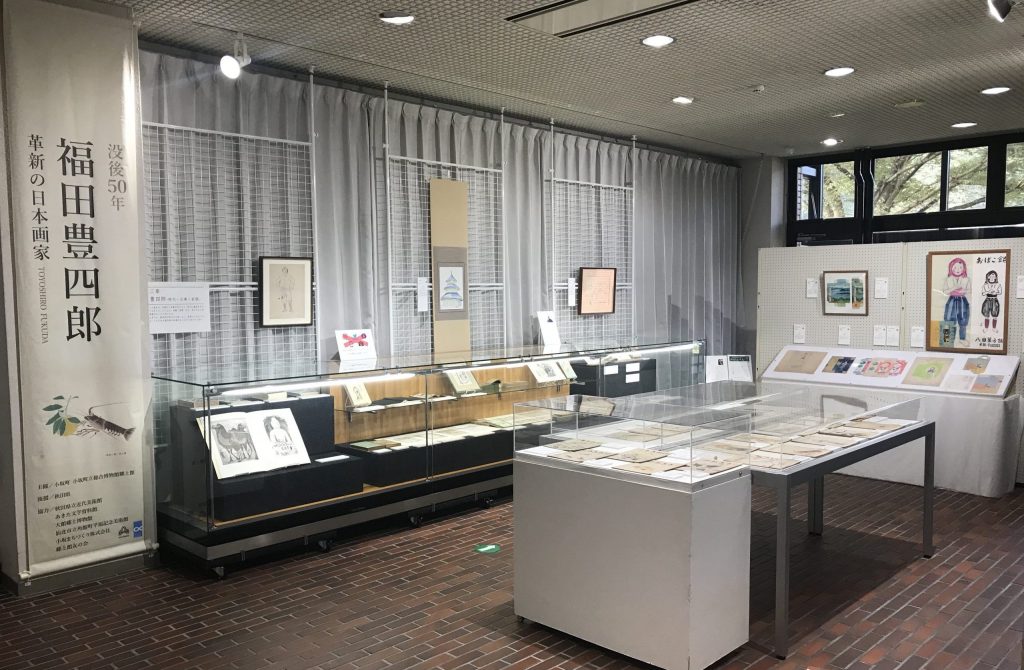
September 8, 2021
“Fifty Years after the Death of Toyoshiro Fukuda, Innovative Japanese Artist” and COVID-19: Kosaka Town Municipal Museum Kyodokan
Hayato YASUDA
Curator,
Kosaka Town Municipal Museum Kyodokan
This year marks 50 years since the passing of Toyoshiro Fukuda (1904-1970), a nihonga (Japanese-style painting) painter who was associated with Kosaka Town. To commemorate this, Kosaka Town Municipal Museum Kyodokan is currently holding a special exhibition titled “Fifty Years after the Death of Toyoshiro Fukuda, Innovative Japanese Artist.”
Toyoshiro was born as the fourth son of his father, Toyoharu, who ran Fukuda Pharmacy in Kosaka Town, Kazuno-gun, Akita Prefecture, and his mother, Shino. His teachers were Tsuchida Bakusen and Kawabata Ryushi. His works are found in the collections of various museums in Akita Prefecture, including this museum as well as Akita Museum of Modern Art, Akita Senshu Museum of Art, Odate City Museum, and Hirafuku Memorial Art Museum in Kakunodate, Semboku City. Museums outside of Akita Prefecture that hold his works include The National Museum of Modern Art, Tokyo; Setagaya Art Museum; Musashino Art University Museum & Library; and Fukushima Prefectural Museum of Art. The highlight of our exhibition is Aki wo Tsuibamu, which, it is believed, is being shown to the public for the first time since the first spring Seiryusha exhibition in 1933, 87 years ago.
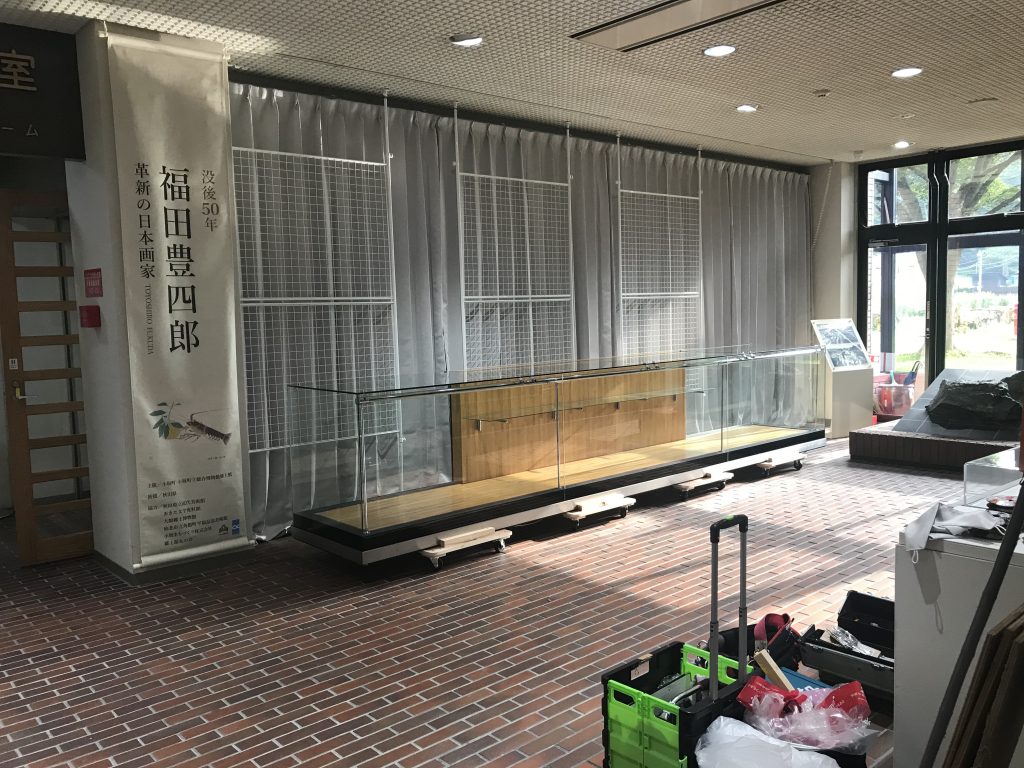
Our exhibition is an attempt to flesh out an image of Toyoshiro, who had a vision of the Neo-Nihonga style, through his paintings and friendships. Although many museums and art galleries have held Toyoshiro exhibitions over the years, what makes this one unique is that it adds an analysis of his private journals and correspondences, which have received scant attention heretofore. From his journals, we learn about his military service in northern and central China with Kenji Yoshioka, a nihonga artist, in 1938 as well as his service in Southeast Asia under the command of Tsuguharu Fujita, a Western-style artist, in 1942. We also hear about his participation in an “Asian solidarity cultural art mission” that was led by the philosopher Tetsuzo Tanikawa in 1956. And from Toyoshiro’s correspondences, we learn about his friendships and get details about his daily work, including how he sold his paintings and who bought them, and his work providing illustrations for serialized novels appearing in newspapers.
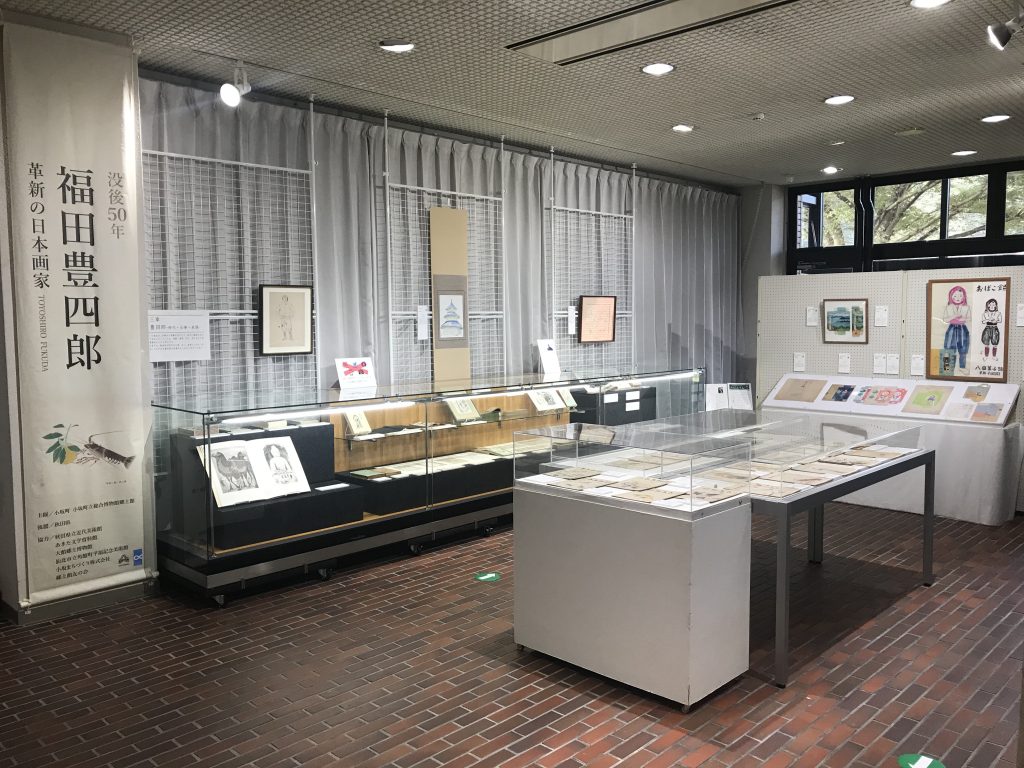
Looking at these materials, it becomes clear just how attractive and “human” the nihonga artist known as Toyoshiro was. While it is unfortunate that the materials’ sheer volume makes it impossible to display everything, we have nonetheless put together an exhibition that adds some background to his works of those times. We invite everyone to come and have a look.
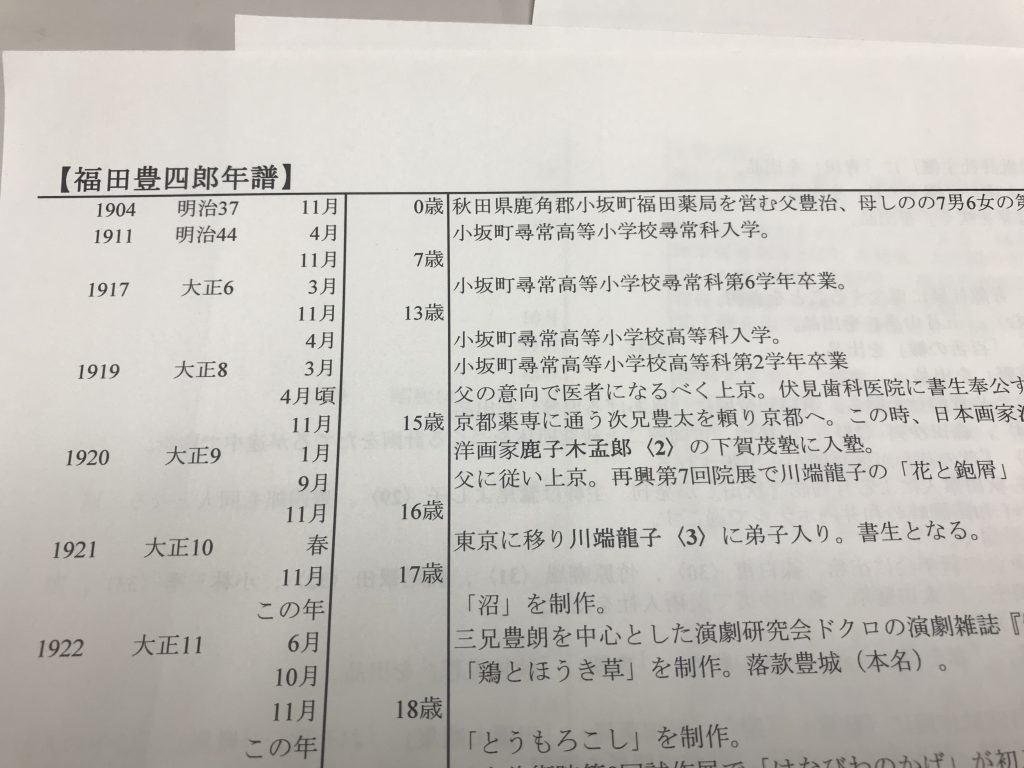
All museums and other such facilities are having to implement new measures in the face of the COVID-19 pandemic. They include temporary closings, cancellation or postponement of exhibitions, and using reservation systems. This exhibition is no exception, as we could not conduct studies that we planned to do in other prefectures; indeed, it initially appeared that the exhibition itself might not be possible. Under such circumstances, many museums began streaming explanatory videos for their exhibitions via social media or uploading collection commentaries. About this time, Kyodokan’s director suggested “holding an exhibition on a curator’s work to show Kosaka’s residents what a curator does.” We eventually turn this idea into reality by streaming “#Tenjikai-ga-dekiru-made” (until the exhibition is ready) as a social media program presenting our activities from the Toyoshiro exhibition’s initial stages up to its opening. The distributed content covered studies, exhibit photography, editing of illustrated catalogs, meetings, and exhibit preparation among other topics. This undertaking has two main objectives. The first is to inform people about the jobs of museums and curators, which tend to be hidden from view. And the other is to stimulate users’ expectations for the Toyoshiro exhibition.
Naturally, we also had to establish COVID-19 countermeasures for the museum. At the end of May, we summarized measures to prevent infections among visitors and staff by preparing “Guidelines for Controlling Coronavirus Infections at Kosaka Town Municipal Museum Kyodokan.”
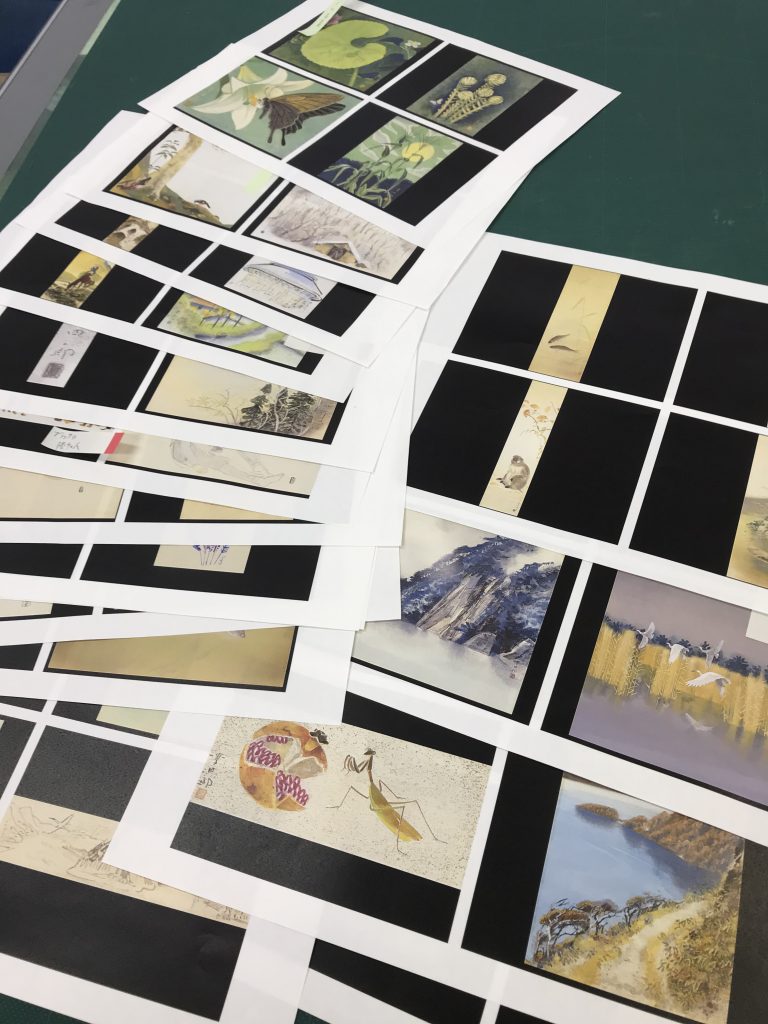
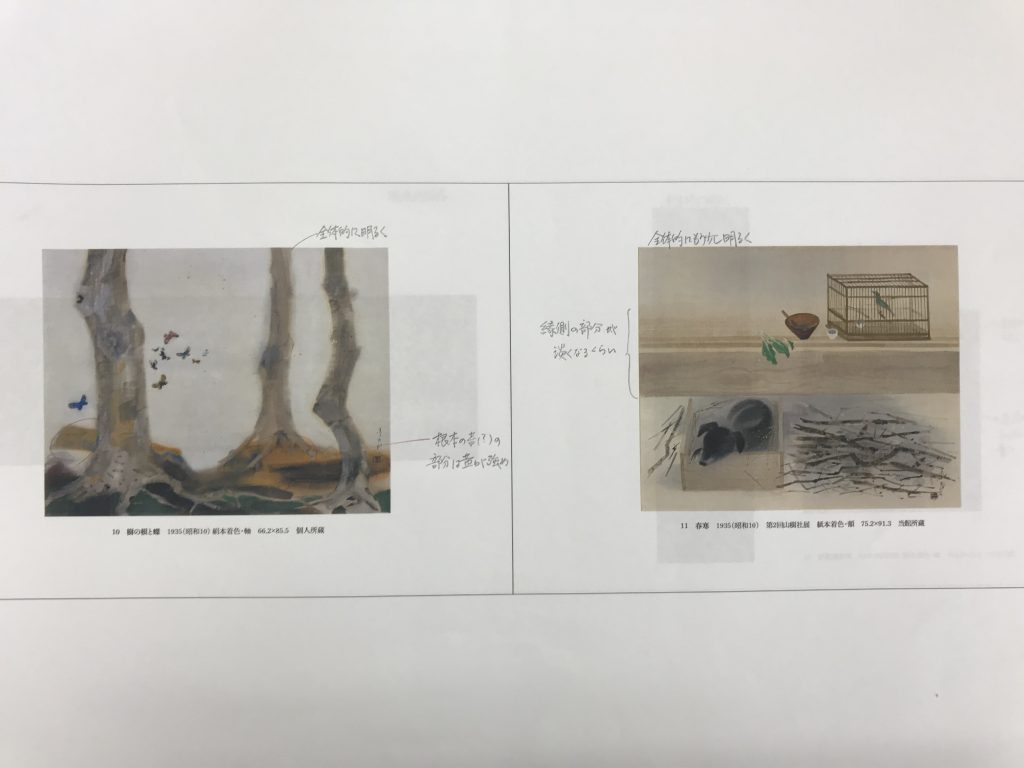
Although we ordinarily do not set a cap on participation in curators’ “gallery talks,” we decided to set up two sessions–a morning session and an afternoon session–and to limit capacity to 15 visitors each. We ask those visitors who are unable to participate to watch a video providing exhibit commentary that is shown in the museum. The video is also available on YouTube and social media. All of these new initiatives use existing resources. For example, a public relations officer in the Kosaka Town Office’s general affairs department already uses social media. And the video was shot and edited by the museum’s curators and a group of residents that supports regional revitalization. I do not believe any of this special; we simply did what we could as a small museum with limited staffing and funds. Nonetheless, although I cannot claim that all of our coronavirus countermeasures are operating perfectly, I do think our preparation of the guidelines was important, as awareness among our staff certainly improved as a result. It is safe to say that, for us, COVID-19 is a crisis with a paradoxical nature: While forcing us to think about how to create a safe space in which people can view exhibits with peace of mind, it has also drawn our attention to how we display museum items, our approach to public relations, and new perspectives for studying our collection.
(Hayato YASUDA)
Kosaka Town Municipal Museum Kyodokan
Kyodokan is a museum in Kosaka Town, a community in northern Akita Prefecture that is home to Lake Towada. Situated next to the municipal library, the museum is a useful facility for learning about the region’s history. It is visited by about 4,000 people a year. Kyodokan is a three-minute drive from Kosaka Interchange on the Tohoku Expressway.
48-1 Nakamaeda Aza-Kosaka, Kosaka-machi, Kazuno-gun, Akita-ken 017-0201